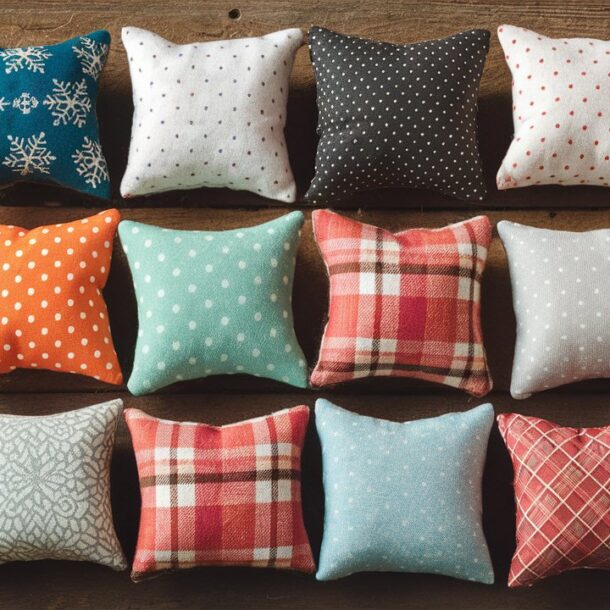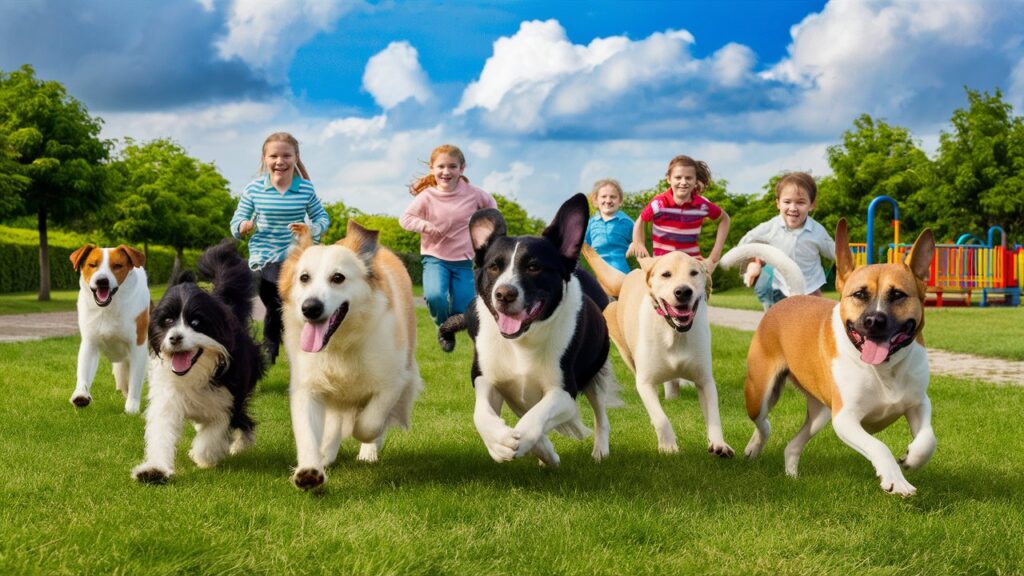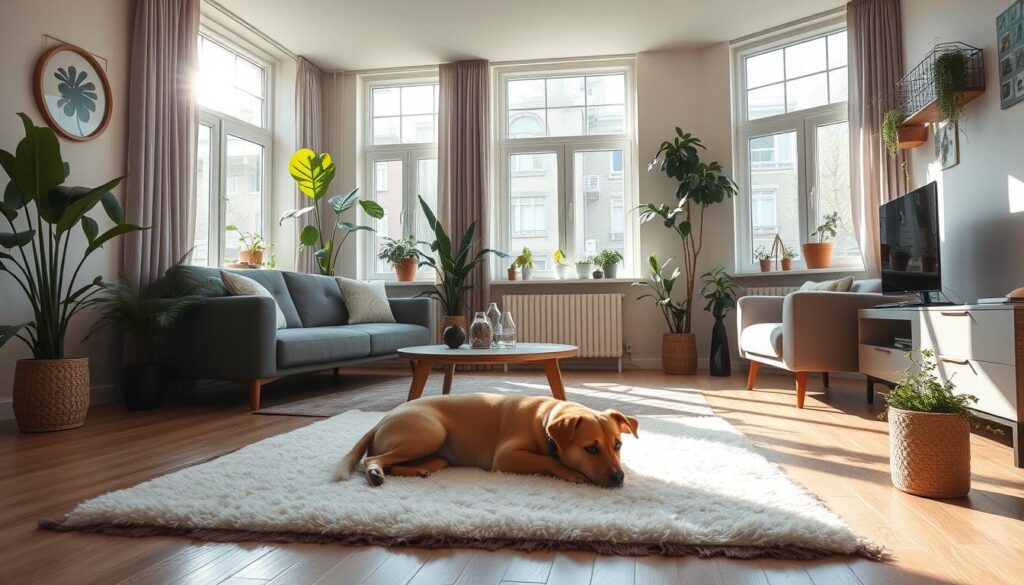
This website uses cookies to ensure you get the best experience on our website. View our Privacy Policy here.

Share this article via:
Please note: This website contains affiliate links. As an Amazon Associate, we earn from qualifying purchases at no additional cost to you.
.
Choosing the right dog is a big decision. It needs careful thought. This guide helps you find the perfect dog for your lifestyle and home. We’ll look at important factors like breed, family size, and grooming needs.
There are many dog breeds out there, each with its own traits and needs. It’s key to think about size, lifespan, and how active they are. The dog you choose will change your daily life and your commitment to being a pet owner.

Choosing the right dog is key. Dogs are more than pets; they are lifelong friends that need our commitment. We must think about how they’ll fit into our lives and the costs involved.
Getting a dog is a big decision. It’s not like returning a toy if it’s too much work. We promise to love and care for them for 8 to 15 years, depending on the breed.
Having a dog changes our daily routines. We’ll need to spend time on exercise, grooming, and training. Knowing what each breed needs is important to find the right fit for us.
There are costs to owning a dog, like vet visits and food. We need to budget for these expenses. Being a responsible pet owner means giving our dogs the best care we can.
Understanding the commitment, lifestyle impact, and costs helps us make a good choice. This way, we can have a happy and rewarding relationship with our dog.
The debate between purebred dogs and mixed breeds is fascinating. Both have their own benefits. Knowing these can help us choose the right dog for us.
Purebred dogs are predictable. They have specific looks, behaviors, and personalities. This predictability is great for those who want a dog that fits their life perfectly.
Mixed breeds are also wonderful companions. A 2013 study showed that many genetic disorders affect both purebred and mixed-breed dogs equally. Another study found that purebreds and mixed breeds face hip dysplasia at the same rate.
Cost is another thing to think about. Mixed-breed dogs are often cheaper than purebreds. This is because their adoption, spay/neuter, and vaccination costs are lower.
In the end, the choice between a purebred or mixed-breed dog depends on what you want. Responsible breeders can tell you a lot about their puppies. Mixed-breed dogs, on the other hand, offer a unique mix of traits.
| Purebred Dogs | Mixed Breeds |
|---|---|
| Predictable physical characteristics, behavior, and personality | Unpredictable blend of traits, but can be healthier due to genetic diversity |
| Breeders can provide information on size, behavior, and health expectations | Often sold at lower prices compared to purebreds |
| Some breeders offer guarantees on long-term health and temperament | Lower chance of being born with inherited congenital diseases |
Choosing between a purebred or mixed-breed dog is important. The key is finding a dog that fits your lifestyle. By considering the pros and cons, you can find a dog that will bring happiness to your life.
Finding the perfect dog is a big decision that affects both you and your pet. It’s important to think about your living space, how active you are, and how much time you can spend with your dog.
The size and type of your home matter a lot when picking a dog. If you live in a small apartment, a compact dog like a Bulldog or French Bulldog is best. On the other hand, a big yard is perfect for high-energy dogs like Labradors or German Shepherds.
How active you are is key in choosing a dog. If you love outdoor activities, a dog like a Border Collie or Vizsla is great. But, if you prefer relaxing at home, a calm dog like a Cavalier King Charles Spaniel or Pug is better.
Remember, owning a dog is a big commitment. Some dogs, like Poodles or Shih Tzus, need a lot of grooming. Others, like Greyhounds or Whippets, are easier to care for and fit well into busy lives.
By thinking about these things, we can find the perfect dog for our active lifestyle, apartment living, and preferences. This leads to a happy and fulfilling life for both us and our dog.
Choosing the right dog breed is key to a happy home with your new pet. With over 200 dog breeds, each has its own special traits. It’s important to know what each breed needs before you decide.
The American Kennel Club (AKC) and breed-specific websites are great places to learn. They tell you about a breed’s history, purpose, and personality. Whether you want a small Chihuahua or a big German Shepherd, there’s a breed for everyone.
| Breed | Temperament | Exercise Needs | Grooming Requirements |
|---|---|---|---|
| Boxer | Loyal, energetic, playful | High | Moderate |
| Labrador Retriever | Friendly, intelligent, eager to please | Moderate to High | Moderate |
| German Shepherd | Loyal, intelligent, protective | High | Moderate to High |
| Great Dane | Gentle, friendly, patient | Moderate | Low |

Choosing the right dog for your lifestyle means looking at their energy level and exercise needs. Different breeds need different amounts of activity. Finding the right match is key to a happy and fulfilling life together.
Active people and families will love high-energy breeds like Border Collies, Labrador Retrievers, and Australian Shepherds. These dogs need lots of physical and mental activity to be happy and healthy. They love activities like agility training, hiking, and dog sports.
For a balanced lifestyle, breeds like Beagles, Cocker Spaniels, and Boxers are great. They have moderate energy and fit well into both active and relaxed routines. They’re perfect for families or individuals who can provide regular exercise and playtime.
If you’re more laid-back, low-energy breeds like Basset Hounds, Bulldogs, and Shih Tzus might be better. They enjoy easy walks and gentle activities. They’re great for those who prefer less intense outdoor exercise.
Think about your activity level and how much time you can spend exercising your dog. This ensures a happy and fulfilling relationship. Choosing the right breed is essential for a loving and enriching home.
| Breed | Energy Level | Exercise Needs |
|---|---|---|
| Border Collie | High | Vigorous, daily exercise and mental stimulation |
| Labrador Retriever | High | Regular, high-intensity activities like running, swimming, and playing fetch |
| Australian Shepherd | High | Frequent, challenging exercises like agility training and herding activities |
| Beagle | Moderate | Daily walks, playtime, and occasional high-intensity activities |
| Cocker Spaniel | Moderate | Regular exercise, including walks, playtime, and moderate physical activities |
| Boxer | Moderate | Daily walks, playtime, and moderate exercise routines |
| Basset Hound | Low | Leisurely walks and relaxed, low-intensity activities |
| Bulldog | Low | Gentle activities, short walks, and ample downtime |
| Shih Tzu | Low | Light exercise, such as daily walks and indoor playtime |
When looking for the right dog, your living space is key. Big dogs might not fit in small apartments. But, some small breeds do well in tight spaces. Let’s look at how your space affects your dog’s size.
For small apartments, breeds like French Bulldogs, Cavalier King Charles Spaniels, or Dachshunds are great. They need less room and can live well indoors. If you have a bigger house with a yard, dogs like Labradors, Golden Retrievers, or Border Collies are perfect. They love the extra space.
City dwellers should think about a dog’s energy and needs. Dogs like Basset Hounds, Shih Tzus, or English Bulldogs are calm and don’t need much exercise. They’re perfect for city living.
| Living Space | Suitable Dog Breeds |
|---|---|
| Small Apartment or Limited Space | French Bulldogs, Cavalier King Charles Spaniels, Dachshunds |
| House with a Yard | Labradors, Golden Retrievers, Border Collies |
| Urban Living | Basset Hounds, Shih Tzus, English Bulldogs |
Think about your living space and the energy of different dogs. This way, you can find the perfect dog for your lifestyle, whether in an apartment or a house.

Choosing the right dog is more than just what you like. It’s also about your family’s needs. Whether you have kids, live alone, or have other pets, picking the right breed is key. It affects your family’s happiness and your dog’s well-being.
Families with kids often choose gentle and patient dogs. The American Canine Association (ACA) says 60% of families see their dogs as comfort and support for their kids. Golden Retrievers and Bulldogs are great because they’re kind and good with children.
Living alone means dogs need to be different. They should be easy-going, independent, and need some exercise. This way, they keep you company without needing too much attention, letting you stay active.
Adding a new dog to a home with pets needs thought. Dogs like Labradors get along well with other animals. The American Dog Breeders Association (ADBA) says 57% of families pick breeds that are friendly to other pets.
Knowing what different dogs need helps us make better choices. This way, we ensure everyone in our family, both humans and dogs, is happy and healthy.
Choosing the right dog breed is more than just about their personality and energy. You also need to think about grooming and maintenance needs. Each dog breed has its own grooming needs, and it’s key to consider these when picking your pet.
Some breeds, like Afghan Hounds or Poodles, need daily brushing and regular grooming. Others, like Labradors or Bulldogs, have simpler grooming needs. Knowing a breed’s grooming needs helps you decide if you can handle the upkeep.
Some dogs also need extra grooming, like nail trimming or ear cleaning. Breeds with wrinkly skin, like Shar-Peis or French Bulldogs, need extra care to avoid skin problems.
When picking a dog, think about your grooming habits and preferences. If you don’t like grooming, choose a low-maintenance breed. But if grooming is something you enjoy, a breed that needs more grooming might be perfect for you.
Understanding the grooming requirements and pet ownership needs of different breeds is crucial. It helps you pick a dog that fits your lifestyle and expectations. By researching and choosing a breed that suits your grooming habits, you and your pet can have a happy and fulfilling life together.
Choosing the right puppy is a big decision. Working with responsible breeders is key. They care deeply about their breed and follow strict health testing rules. This means you get a healthy, well-socialized puppy that fits your lifestyle.
Responsible breeders know health testing is vital. They look for certifications from the Orthopedic Foundation for Animals (OFA) and the Canine Eye Registration Foundation (CERF). These tests check for inherited diseases, ensuring your puppy is healthy.
Finding the right dog can be easier through adoption or rescue groups. This choice not only saves a life but also brings a new friend into your home.
Adoption lets you be honest about your lifestyle and what you expect. Shelters will ask you questions to find the best match. If you want a specific breed, look into breed-specific rescues. They have dogs of that breed waiting for homes.
Adoption is a great way to find a dog that fits your lifestyle. Whether you want a high-energy dog or a calm one, patience and an open mind can help you find the perfect match. You’ll give a deserving dog a second chance at a loving home.
After picking your new furry friend, it’s time to get ready for their arrival. Make sure you have everything they need, like a comfy crate and food bowls. Don’t forget toys, bedding, and grooming tools.
Make your home safe for your new pup. Secure dangerous spots and remove things that might tempt them. Create a special area for them to play and explore safely.
Training and socializing your dog is key for their happiness and your bond. Look into positive training methods and consider obedience classes. This will help them learn important commands and behave well.
Introduce your dog to new people, animals, and places slowly. This lets them feel safe and comfortable. By preparing your home and yourself, you’ll make the transition smooth. With the right supplies, training, and socialization, you and your dog will have a wonderful journey together.
Please note: This website contains affiliate links. As an Amazon Associate, we earn from qualifying purchases at no additional cost to you.
.
Share this article via:

This website uses cookies to ensure you get the best experience on our website. View our Privacy Policy here.